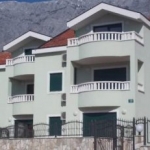Let's go back to the 18th century to find out what was it like to live in the multi-ethnic city on the banks of the Drava river. Let's take a peek among the crowned walls of the fortress which had guarded the heart of an European city. We do not need a time machine, the walls are still there, proud and solid, a baroque monument in the heart of the most beautiful Slavonian town Osijek. So, if you are renting an accommodation in Osijek, you have a unique opportunity to travel into the Baroque century, walking through the Tvrdja streets, all made of brick and stone. Tvrdja Osijek was built as the fortress-town on the border with the Ottoman Empire in 1712. It was designed and built by Prince Eugen Savoy, with architect Maximillian Eugen Gosseau d`Henef participated in the project. Why is his name engraved in the records of the history of Osijek? Because the Fortress of Osijek got star shape due to his imagination, a shape that differs it from the other fortifications of that time. Tvrdja has been built for 10 years, but construction works continued until the 1860s. People from Styria, Bavaria, Kranjska, Italy, Moravia, Hungary, Bulgaria and France lived in Tvrđa in the 18th and 19th centuries making it the international city. Soldiers, merchants and tradesmen were settled there by the plan, and along with Croatian, one could hear Latin and German in the streets of Fortress, which were the official languages of the city. The multi-ethnic character of the Fortress remained until the beginning of the 20th century when the city was connected with the fort, and the military features were slightly disappearing under the influence of Osijek's rapid industrialization and urbanization. Osijek is one of the few towns in eastern Europe that has well connected baroque urban centre and military fortress today. The oldest square in the Fortress is the Holy Trinity Square (Trg Svetog Trojstva). The first name of this square was Wine square (Vinski trg), because wine from Baranja was sold to soldiers and inns every Saturday and Wednesday here. Each street of Fortress tells its story, let them guide you over stone passages through the heart of Osijek and tell you the most beautiful stories about the communion and courage of the people who once inhabited these spaces. Try traditional gastronomy and excellent wines in Tvrdja taverns. Do not miss the visit to the Museum of Slavonia, which was established in 1877, now settled in the Magistrate building on the Holy Trinity Square, a place dedicated to Vladimir Prelog, the Nobel Prize winner of chemistry and other famous citizens of Osijek.
Read more











